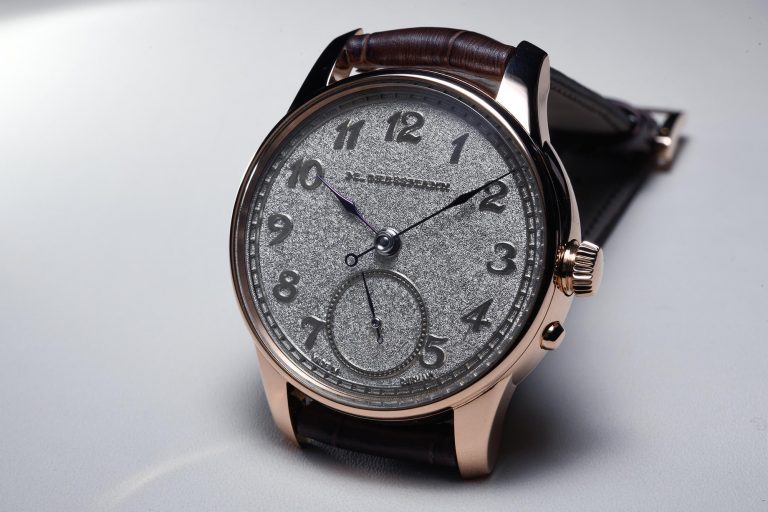The first thing to note about my viewing of the new Moritz Grossmann Tremblage is the good news that it is now available at Singapore retailer, Sincere Fine Watches. Check it out when you can. as the shelves start being populated with the full collection. It’s great that this severely underrated brand gets a proper platform in my own backyard to be showcased to potential buyers and watch connoisseurs.
So what is the Moritz Grossmann Tremblage?
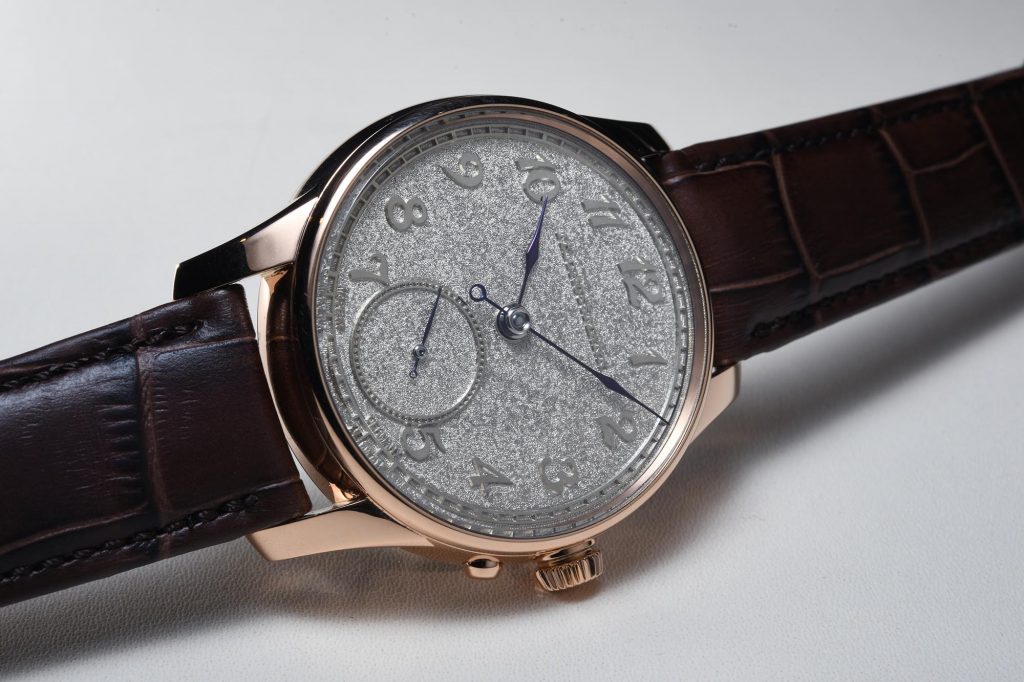
Well, it’s essentially a watch with the time and small seconds from the Benu-Heritage collection, with the main difference being the fantastic amount of hand-engraving on the dial.
Created to celebrate the 13th anniversary of Moritz Grossman, this is a watch that has been decorated with a lavish amount of attention, and using an old engraving technique called “tremblage”, which comes from the French word “tremblant” which means “to tremble”.
It’s exactly how you might imagine it to be – the engraver had to set one corner of the burin into the metal and constantly move it back and forth, from right to left, from one corner to the other, to create the uneven surface on the dial. The end result is a dial that seems to sparkle when moving it in the light.
For the engraver, the main difficulty is in making sure that the resultant texture is evenly done. So while there is some amount of looseness in how the pattern is made, the amount of force that is used has to be consistent throughout.
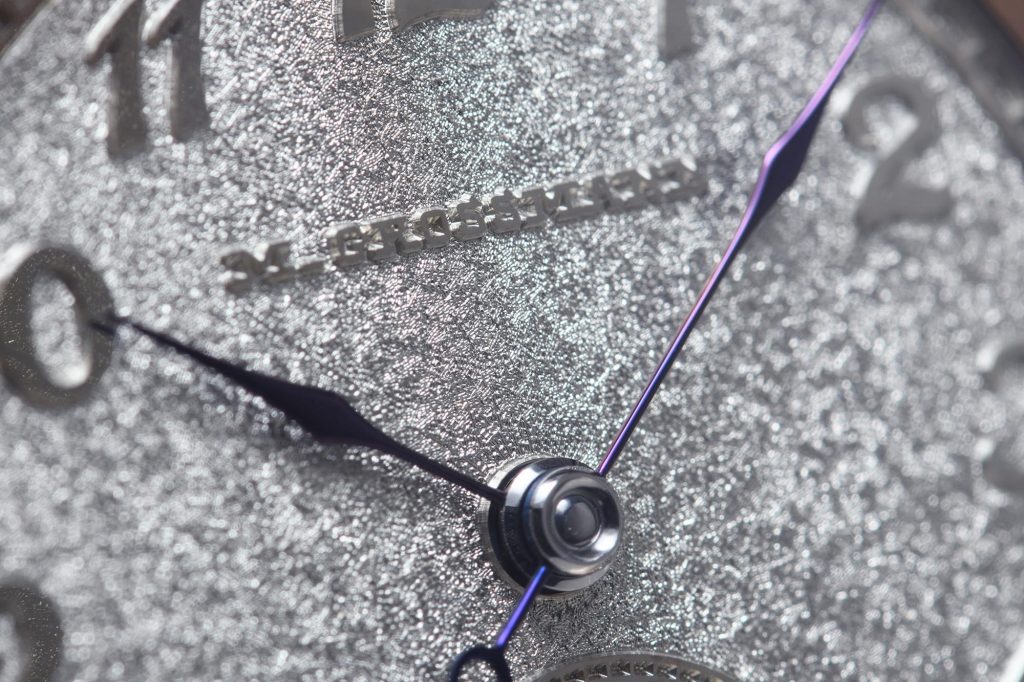
And yet that’s not even the most impressive part about the dial. The parts of the dial that you see, all the numerals of the hours, the edge of the circular small seconds subdial and even the historic “M. Grossmann” logo from 1875 are not mounted appliqués. Instead they have been raised from the blank German silver dial by removing the surrounding material like relief sculpture, and then given a flat polish that contrasts well with the rough background.
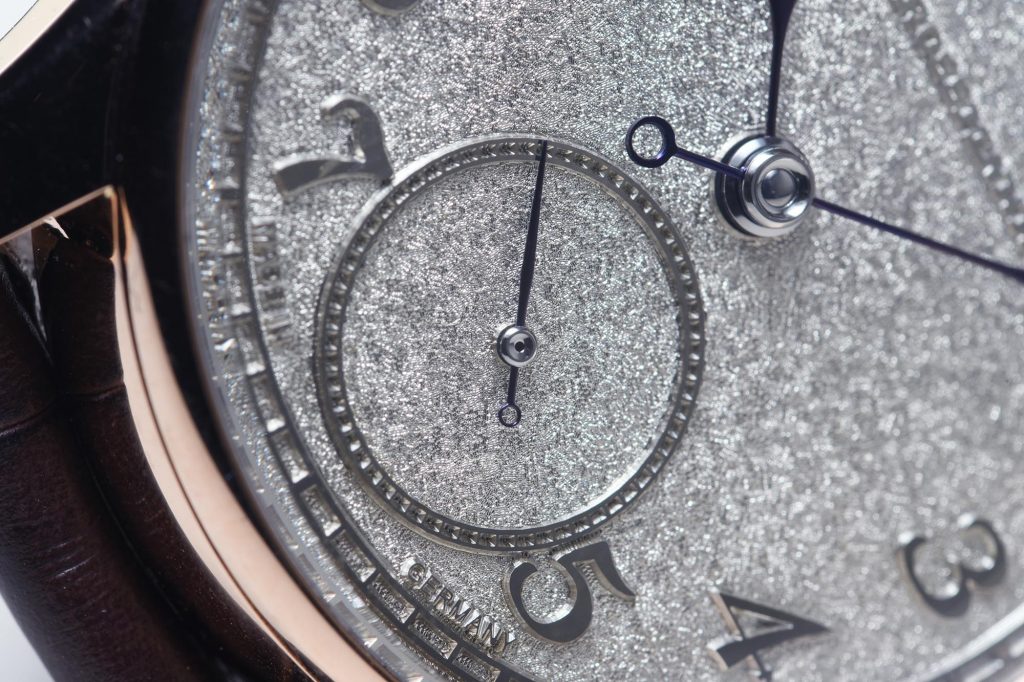
This additional layer of hand work that needs to be done, which when combined with the “tremblage” engraving after that, then coupled with the heat treated to a brown-violet hue hands does in sum, make an end result that will appeal to those who appreciate a fair amount of craftsmanship in their watches.

This attitude extends as well to the manually wound calibre 100.1 seen through the glass case back, which is of a pillar structure, and with components made out of German silver that are all elaborately hand finished to the level, some say, of their more well known Glashütte based neighbour.
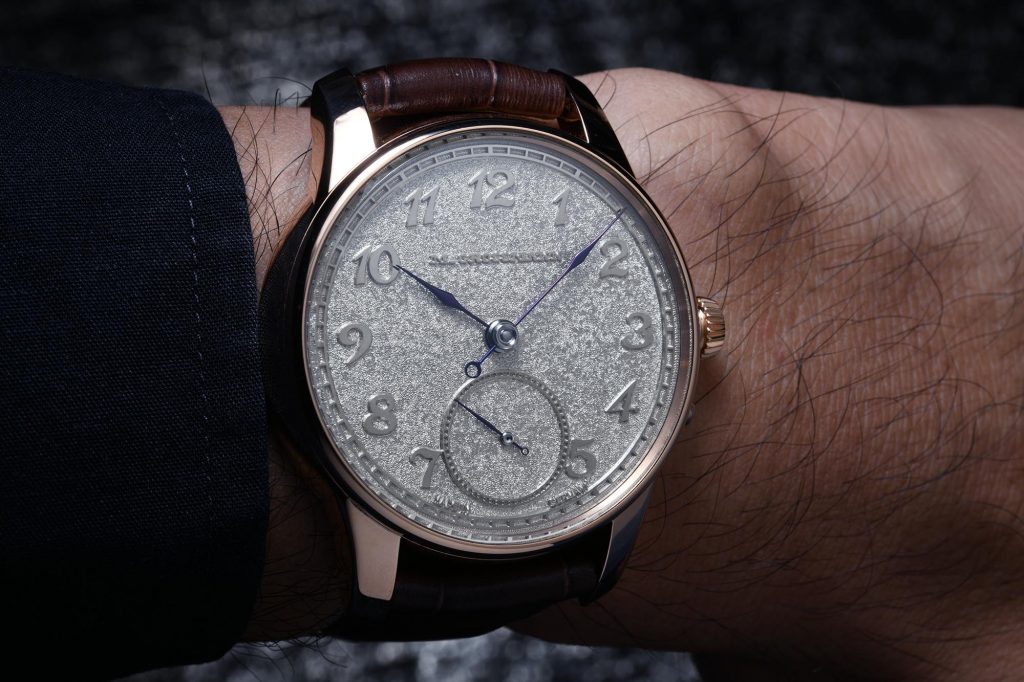
There are two case variations of this watch, one in 18K rose gold with dark brown alligator strap (SGD$76,900) and the other in stainless steel with dark blue alligator strap (SGD$56,300), and it is, as far as I’ve been told, not limited per se, but limited by production. That “tremblage” engraving does take time after all.
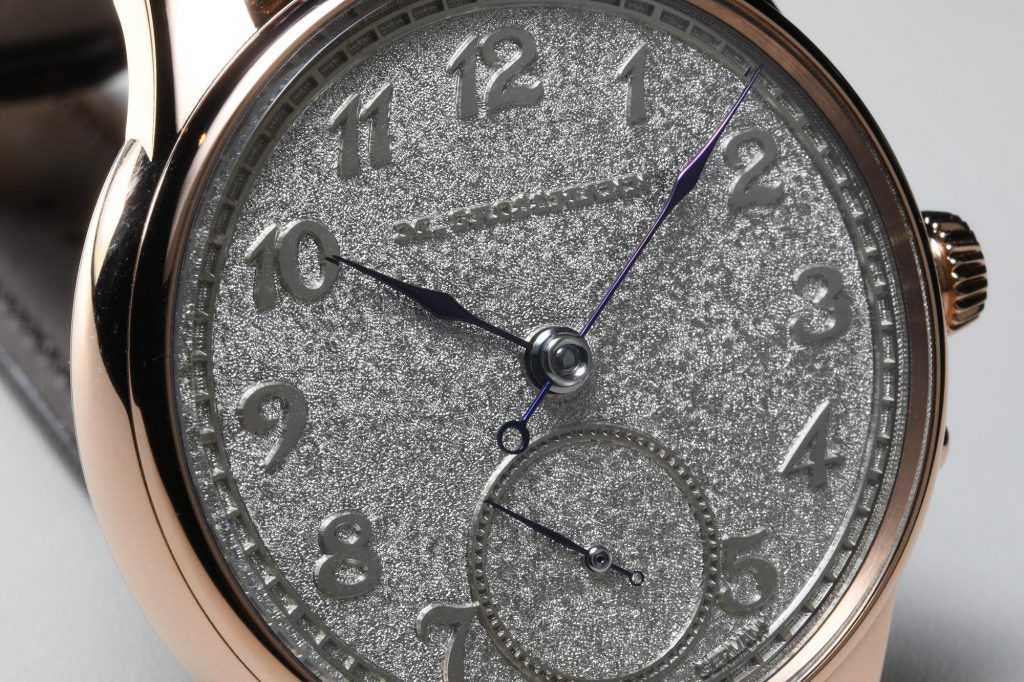
Technical Specifications
Oscillator: Shock-resistant Grossmann balance with 4 inertia screws and 2 poising screws, Nivarox 1 balance spring with No. 80 Breguet terminal curve, Gustav Gerstenberger geometry
Balance Diameter: 14.2 mm, frequency: 18,000 semioscillations/hour
Power reserve: 42 hours when fully wound
Functions: Hours and minutes, subsidiary seconds with stop second, Grossmann manual winder with pusher
Operating elements: Crown in 750/000 gold/stainless steel to wind the watch and set the time, pusher in 750/000 gold/stainless steel to start the movement
Case dimensions: Diameter: 41.0 mm, height: 11.35 mm
Movement dimensions: Diameter: 36.4 mm, height: 5.0 mm
Case: Three-part, precious metal/stainless steel
Dial: German silver, tremblage
Hands: Manually crafted, steel, annealed to a brown-violet or blue hue
Crystal/display back Sapphire crystal, anti-reflective coating on one side
Strap: Hand-stitched alligator leather with prong buckle in
precious metal/stainless steel
Special features: Dial tremblage, Grossmann balance; hand setting override and start of movement with lateral pusher; space-saving modified Glashütte stopwork with backlash; adjustment with Grossmann micrometer screw on cantilevered balance cock; movement with 2/3 plate and pillars made of untreated German silver; 2/3 plate, balance cock and escape-wheel cock hand engraved; grained train bridge; 3-band snailing on the
ratchet wheel; raised gold chatons with pan-head screws; separately removable clutch winding mechanism; stop seconds for hand setting


